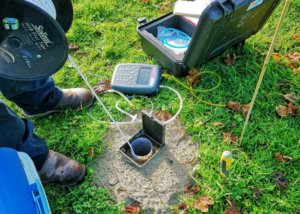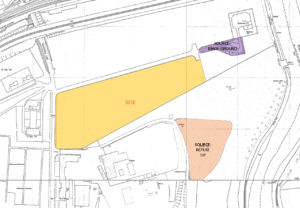Common Contaminants – Ground Gas
28th November 2020
For our last instalment of Common Contaminants, we focus on Ground Gas. Unlike other contaminants in the ground, hazardous gases cannot be readily seen or identified from smell. This makes ground gas particularly problematic for your build unless a detailed ground gas assessment is undertaken.
In all UK soils ground gas is present. Normally in trace amounts that do not cause harm. There are many instances where this is not so. Northpoint consider aspects of ground gas a common contaminant. A ground gas assessment should be considered if you are considering a new build for various reason. We encourage any developer to read through our brief technical note, and hope this provides answers to questions you may have about the process and identifying potential risks.
Ground Gas – What is it?
In the soils and rocks beneath our feet, gas is present in its natural form or as a result of human activity. This typically includes varying concentrations of oxygen and carbon dioxide. Occasionally, methane, carbon monoxide, and sulphur dioxide may be present.
Understandably, where concentrations of certain gases beneath your home or development site are higher than normal, this could pose a risk.
Where does Ground Gas Come From?
 Quite simply, it can be naturally present or can be generated through human activities (or a combination of both).
Quite simply, it can be naturally present or can be generated through human activities (or a combination of both).
Naturally, soils such as alluvium and peat have a gassing potential. In contrast, fairly common examples of ground gas generated from human activity include fills and made ground, landfill sites, and coal mine workings.
Why have a Ground Gas Assessment undertaken?
Sadly, there are rare instances where people have died due to asphyxiation or an explosion destroying a property. Consequently, the UK adopts various guidance and British Standards to ensure safe development. Planning and/or Building Regulations will regulate this process.
In the first instance, we recommend that you conduct a Preliminary Risk Assessment. This will identify all of the potential sources of hazardous ground gases beneath or adjacent to your site.
The preliminary assessment will flag up any issues. As a result, this allows for a targeted investigations to record the gas levels and establish the risks.
How do Northpoint undertake the assessment?
Our investiga tion and validation assessments are undertaken in accordance with current UK industry guidance and related British Standards. From the preliminary stages, to the investigation and monitoring stages we prepare detailed Ground Gas Risk Assessments.
tion and validation assessments are undertaken in accordance with current UK industry guidance and related British Standards. From the preliminary stages, to the investigation and monitoring stages we prepare detailed Ground Gas Risk Assessments.
The monitoring assessment may come from wells installed into the ground from boreholes. From this, we conduct a number of monitoring visits to ensure enough data is captured. This helps us to establish a level of risk. Alternative methods may include installing continuous monitors in basements or below sub-floor voids to make an assessment.
Ultimately, we aim to fully characterise the risks to a proposed development. We use the assessment to prepare a Ground Gas Verification Strategy.



